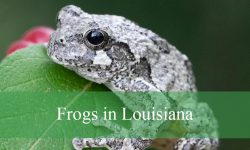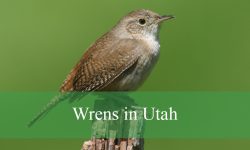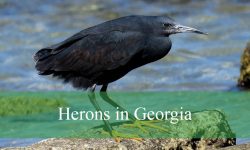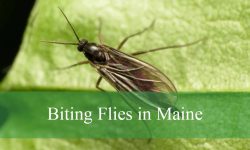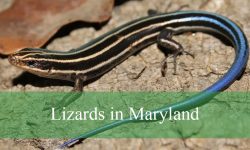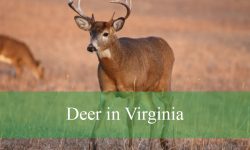Georgia’s outdoors are filled with insects and arachnids, several of which can be harmful to humans if encountered. From venomous spiders to aggressive ants and stinging wasps, knowing which species are dangerous is essential for safety and awareness.
Many of these creatures are more active in warm months and favor habitats like wooded areas, gardens, and urban environments. Understanding their behavior, identifying features, and habitats can help prevent unwanted encounters.
This guide covers 15 of the most dangerous bugs in Georgia, providing detailed identification tips, photos, and safety information to keep you informed and protected.
Types of Dangerous Bugs Found in Georgia
Velvet Ant (“Cow Killer,” Dasymutilla occidentalis)
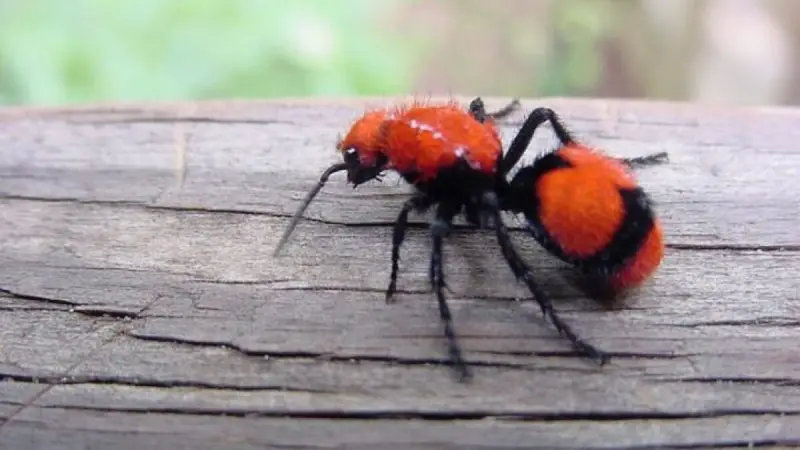
Characteristics and Identification
Velvet ants are actually wingless female wasps. They are covered in dense red or orange hairs, with a black abdomen and long, powerful stinger. Males are winged and harmless, but females are the ones capable of delivering a painful sting.
Behavior and Habitat
Females wander on the ground searching for the nests of ground-dwelling bees and wasps, where they lay their eggs. They are solitary and non-aggressive but will sting if handled. They are commonly found in sandy, open areas.
Danger and Effects
The sting is extremely painful, causing intense burning, swelling, and temporary numbness. Although not deadly, it is often described as one of the most painful insect stings in the US. Allergic reactions are possible but rare.
Observation Tips in Georgia
Velvet ants are most commonly seen in central and southern Georgia during warm months. Avoid handling them directly, and wear shoes and gloves when walking or working in sandy or open habitats.
Black Widow Spider (Latrodectus mactans)
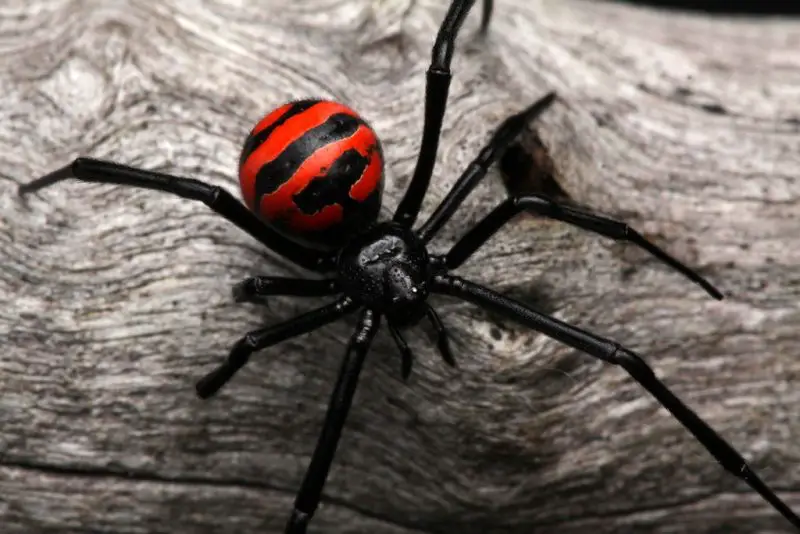
Characteristics and Identification
The black widow is easily recognized by its shiny black body and the distinctive red hourglass marking on the underside of the abdomen. Females are larger and more venomous than males, typically reaching about 1.5 inches including the legs. They have a bulbous abdomen and slender legs that give them a fragile appearance, though their bite is potent.
Behavior and Habitat
Black widows are shy, nocturnal spiders that prefer secluded areas such as woodpiles, sheds, garages, and dark corners around homes. They rarely venture into open spaces during the day, and bites usually occur when they are accidentally disturbed. They weave irregular, tangled webs that are often close to the ground.
Danger and Effects
The venom of a black widow is neurotoxic, causing severe pain, muscle cramps, and spasms. Other symptoms include sweating, nausea, and in rare cases, difficulty breathing. Although fatalities are uncommon, bites require prompt medical attention, especially for children, elderly individuals, and those with weakened immune systems.
Observation Tips in Georgia
In Georgia, black widows are most commonly found in warm, humid areas, particularly in the southern and coastal regions. Gardeners and homeowners should check areas that are dark and undisturbed, such as under mulch, rocks, or inside old boxes. Wearing gloves when moving debris can help prevent accidental bites.
Brown Widow Spider (Latrodectus geometricus)

Characteristics and Identification
The brown widow is smaller and lighter than the black widow, with a tan to brown body and orange or yellow hourglass marking on the underside. Their legs often have banded patterns, making them distinct from the solid black legs of black widows. Adults typically measure around 0.5–1 inch in body length.
Behavior and Habitat
Brown widows are more adaptable to urban environments than black widows and often build webs on fences, under eaves, and in outdoor furniture. They are also less aggressive, tending to retreat when disturbed rather than bite immediately. Their webs are irregular, with a messy structure similar to black widows.
Danger and Effects
Although their venom is potent, brown widow bites are usually less severe than black widow bites. Pain, redness, and mild muscle cramping can occur, but systemic effects are less common. Medical attention is advised if symptoms worsen or if a bite occurs in a vulnerable individual.
Observation Tips in Georgia
Brown widows are expanding their range in Georgia, particularly in urban and suburban areas. They are commonly spotted on outdoor furniture, playground equipment, and around residential structures. Homeowners should inspect these areas and wear protective gloves when handling materials that might conceal the spiders.
Brown Recluse Spider (Loxosceles reclusa)
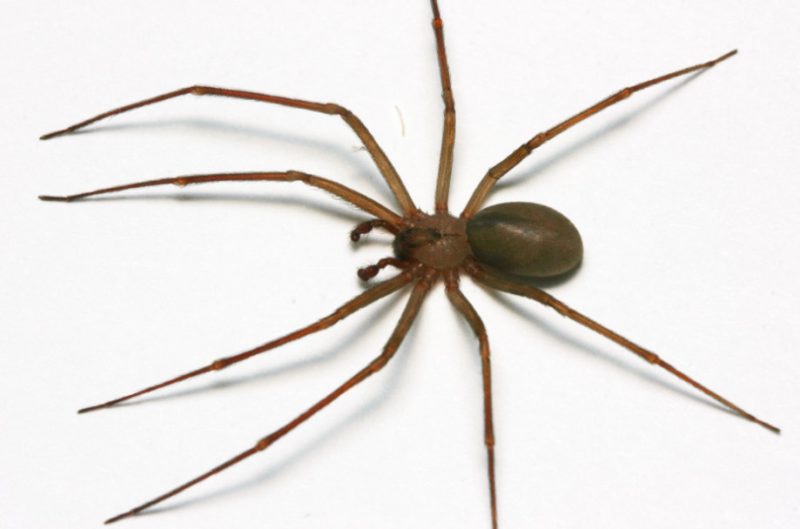
Characteristics and Identification
Brown recluse spiders are light to medium brown with a violin-shaped marking on the dorsal side of the cephalothorax. Adults measure about 0.5–0.75 inches in body length. They have six eyes arranged in pairs, a distinguishing feature compared to other spiders, which typically have eight eyes.
Behavior and Habitat
Brown recluse spiders are nocturnal and prefer hiding in undisturbed places such as attics, closets, cardboard boxes, and woodpiles. They are non-aggressive and usually bite only when pressed against skin. Their webs are small and irregular, lacking the large funnel or orb structures of other spiders.
Danger and Effects
The venom contains enzymes that can destroy skin and tissue, potentially leading to necrotic wounds that heal slowly. Initial symptoms may be mild, but over hours to days, the bite site can develop redness, swelling, and a painful ulcer. Systemic reactions, although rare, can include fever, chills, and nausea.
Observation Tips in Georgia
In Georgia, brown recluse spiders are more common in the northern and central regions, especially indoors. People should carefully inspect storage areas, attics, and basements, and avoid reaching into dark spaces with bare hands. Wearing gloves and shaking out clothing or shoes left undisturbed can prevent accidental bites.
Southern Devil Scorpion (Vaejovis carolinianus)
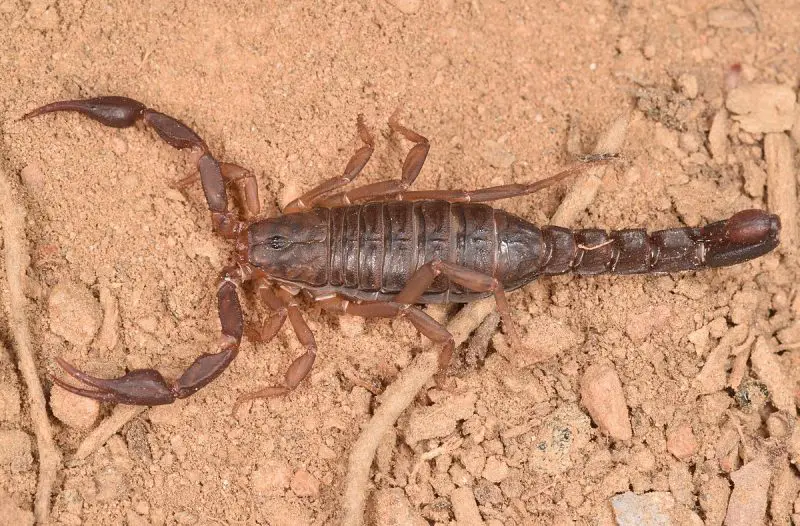
Characteristics and Identification
The Southern Devil Scorpion is a small, light brown to tan scorpion, typically measuring 2–3 inches long. Its body is robust, with a curved tail ending in a stinger. Unlike desert scorpions, it lacks bright coloration but can be identified by its segmented tail and pincers.
Behavior and Habitat
This scorpion is nocturnal and spends the day hidden under rocks, leaf litter, logs, or inside crevices. It is generally non-aggressive and will sting only if provoked. In Georgia, they are often found in wooded areas, gardens, and sometimes near homes.
Danger and Effects
The sting is painful, causing localized swelling, redness, and numbness. While not life-threatening to healthy adults, children, elderly, and allergic individuals may experience more severe reactions. The venom mainly serves to subdue small prey rather than humans.
Observation Tips in Georgia
Southern Devil Scorpions are more frequently observed in central and southern Georgia. Nighttime exploration with a flashlight can reveal their presence, especially in humid, wooded habitats. Caution should be taken when moving rocks or debris in their natural habitat.
Striped Bark Scorpion (Centruroides vittatus)
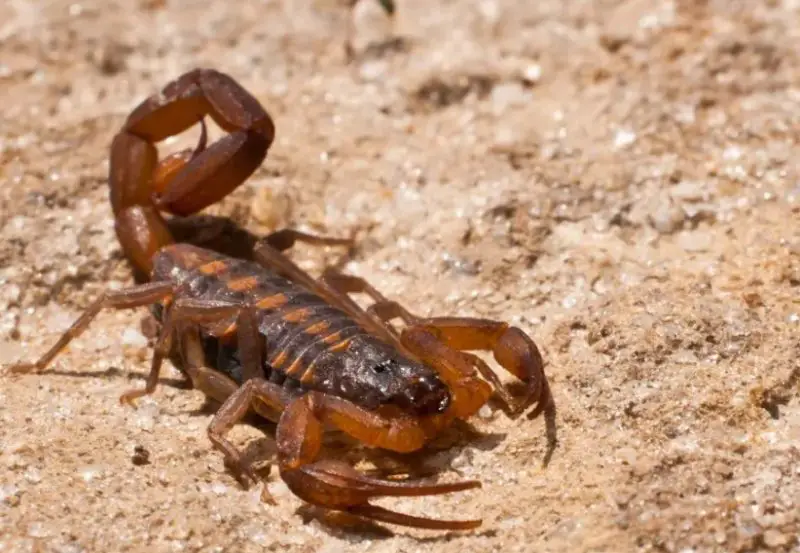
Characteristics and Identification
The Striped Bark Scorpion is light brown with darker longitudinal stripes along its back. Adults grow 2–3 inches long, with slender pincers and a tail curved over the body. They are often confused with other small scorpions but are distinguishable by their striped pattern.
Behavior and Habitat
These scorpions are nocturnal hunters, hiding during the day under bark, logs, rocks, or inside homes. They are generally shy but will sting defensively when threatened. Striped Bark Scorpions are adaptable and can thrive in urban and rural areas alike.
Danger and Effects
Their sting is painful, producing burning sensations, swelling, and redness. Rarely, allergic reactions can occur, but fatalities are extremely uncommon. Children and sensitive individuals should seek medical care if symptoms worsen.
Observation Tips in Georgia
In Georgia, Striped Bark Scorpions are mostly found in the southern and central regions, often around wooded yards and outdoor structures. Using gloves when moving debris or firewood is recommended to avoid accidental stings.
Red Imported Fire Ant (Solenopsis invicta)
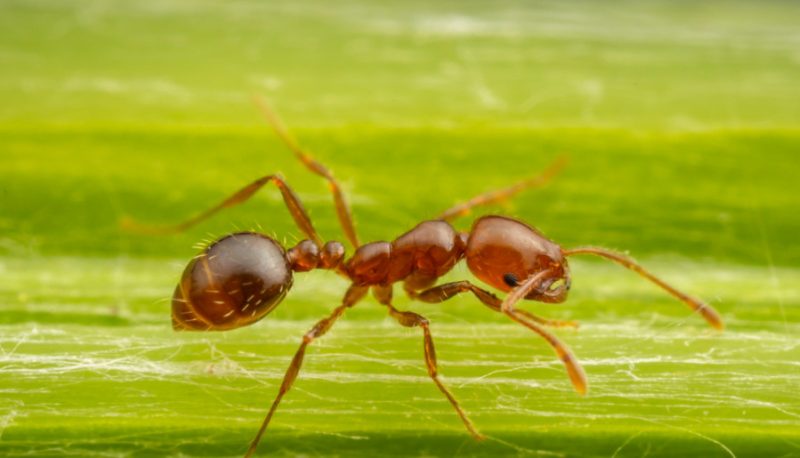
Characteristics and Identification
Red imported fire ants are reddish-brown and measure about 0.12–0.25 inches long. They have a distinct two-segmented body, bent antennae, and a stinger at the end of the abdomen. Colonies can number in the hundreds of thousands, forming large mounds in open areas.
Behavior and Habitat
These ants are aggressive, especially when their nest is disturbed. They are most active during warm months and prefer sunny, open spaces like lawns, parks, and pastures. Mounds are often dome-shaped with no obvious entrance holes, making them easy to overlook until disturbed.
Danger and Effects
Fire ant stings are extremely painful and inject venom that causes a burning sensation, pustules, and itching. Multiple stings can lead to more severe allergic reactions, including anaphylaxis in sensitive individuals. Pets and livestock are also susceptible to stings.
Observation Tips in Georgia
In Georgia, red imported fire ants are widespread, particularly in central and southern regions. Gardeners, hikers, and children should watch for ant mounds when outdoors and wear shoes and gloves. Prompt medical care is recommended for those with severe reactions.
Tropical / Southern Fire Ant (Solenopsis geminata and others)
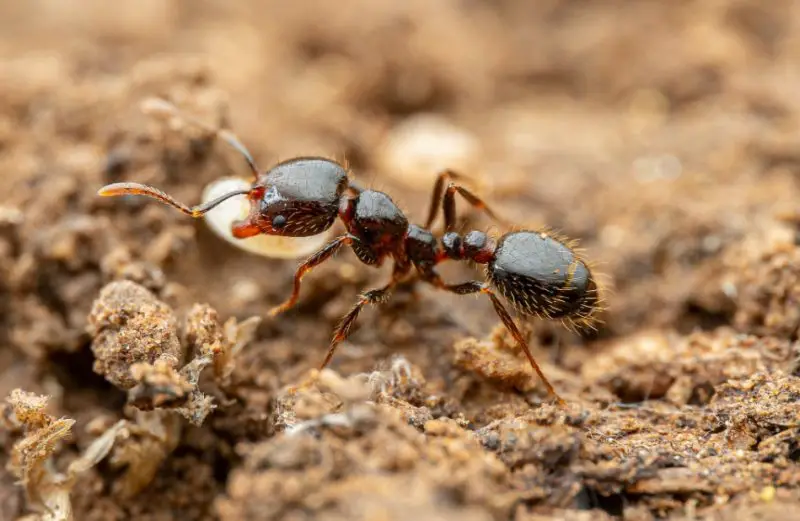
Characteristics and Identification
These fire ants are slightly larger and darker than red imported fire ants, often a reddish-brown to dark brown color. They have a similar two-segmented body and stinger. Mounds are smaller and more irregular in shape compared to red imported fire ants.
Behavior and Habitat
Tropical and southern fire ants are aggressive and build nests in lawns, gardens, pastures, and along roadsides. They swarm quickly if disturbed, delivering multiple stings. These ants are opportunistic feeders and often invade human spaces.
Danger and Effects
Their stings cause immediate burning pain, swelling, and red pustules. Repeated stings or stings to sensitive individuals can trigger allergic reactions. Though fatalities are rare, medical attention is advised if severe symptoms occur.
Observation Tips in Georgia
They are mostly found in southern Georgia and in urbanized areas with open soil. Awareness of mound locations and using protective clothing can help prevent stings. Avoid disturbing nests when mowing lawns or gardening.
Asian Needle Ant (Brachyponera chinensis)
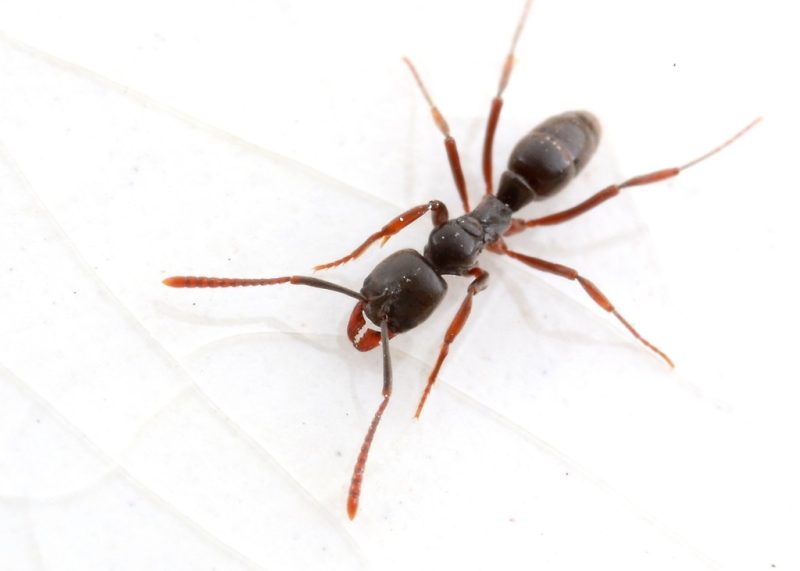
Characteristics and Identification
Asian needle ants are small, brown ants, typically 0.2–0.25 inches long, with a slender body and long legs. They are less conspicuous than fire ants and often nest in leaf litter, mulch, or forest debris.
Behavior and Habitat
This invasive species is primarily found in wooded areas, gardens, and landscaped regions. They are aggressive defenders of their nests and will sting humans if provoked. Unlike fire ants, they are more likely to hide and bite selectively.
Danger and Effects
The sting of an Asian needle ant is sharp and can cause localized swelling, redness, and intense itching. Severe allergic reactions are possible in sensitive individuals. They also compete with native ant species, indirectly affecting local ecosystems.
Observation Tips in Georgia
Asian needle ants are increasingly found in central and southern Georgia. Gardeners should inspect mulch beds, flower gardens, and leaf litter, especially when working barefoot or with bare hands. Protective gloves are recommended when handling potential nesting sites.
Kissing Bugs (Triatoma spp.)
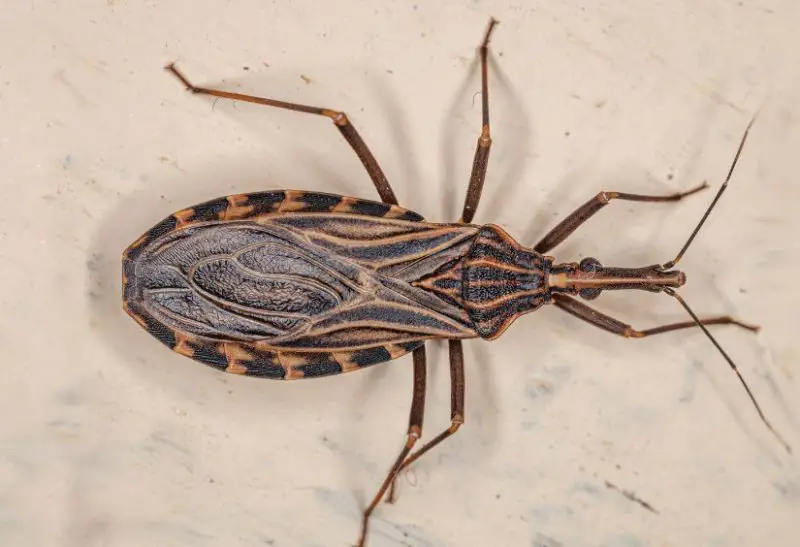
Characteristics and Identification
Kissing bugs are medium-sized, flattened insects measuring about 0.75–1.25 inches long. They are usually brown with distinctive patterns on their wings, and a narrow, elongated head. These bugs are nocturnal feeders, often attracted to lights at night.
Behavior and Habitat
Kissing bugs hide in cracks, crevices, woodpiles, and animal shelters during the day. At night, they emerge to feed on the blood of mammals, including humans. They are primarily active in southern Georgia but can be found throughout the state in rural areas.
Danger and Effects
Kissing bugs can transmit Trypanosoma cruzi, the parasite that causes Chagas disease. While bites themselves are often painless, the potential for disease transmission makes them dangerous. Allergic reactions to bites can also occur, causing localized swelling and itching.
Observation Tips in Georgia
Kissing bugs are mostly observed in rural homes, barns, and animal enclosures. Sealing cracks in homes, removing woodpiles near dwellings, and using screens on windows can reduce encounters. Avoid handling the insects directly.
Assassin Bug (Wheel Bug, Arilus cristatus)
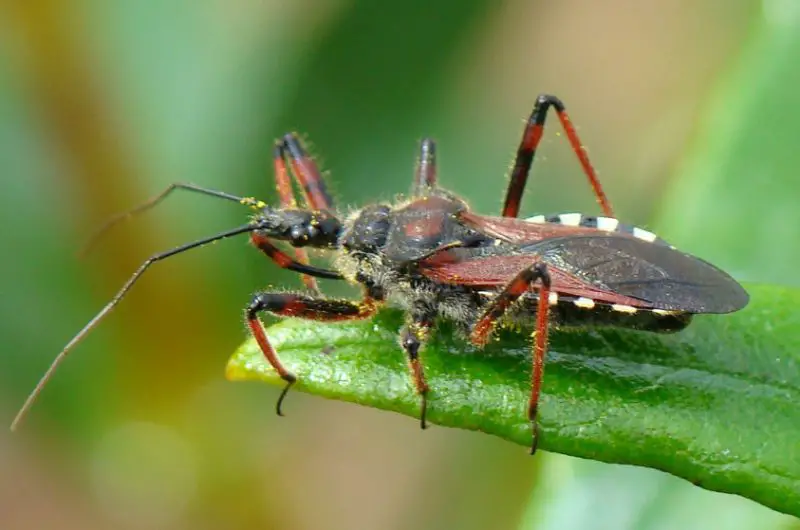
Characteristics and Identification
Wheel bugs are large, predatory insects, often 1–1.5 inches long, with a gray or brown body and a distinctive cogwheel-like structure on the thorax. Their long legs and piercing mouthparts allow them to hunt other insects effectively.
Behavior and Habitat
They are solitary hunters that prey on caterpillars, beetles, and other insects. Wheel bugs are slow-moving and typically found in gardens, forests, and fields. They are generally non-aggressive toward humans but will defend themselves if handled.
Danger and Effects
The bite of a wheel bug is extremely painful, producing localized swelling, redness, and a burning sensation that can last for several hours. Though not deadly, it can be alarming, and allergic reactions are possible.
Observation Tips in Georgia
Wheel bugs are common in central and northern Georgia, especially in areas with abundant vegetation. Gardeners should avoid direct contact and wear gloves when handling plants or inspecting insect populations.
Lone Star Tick (Amblyomma americanum)
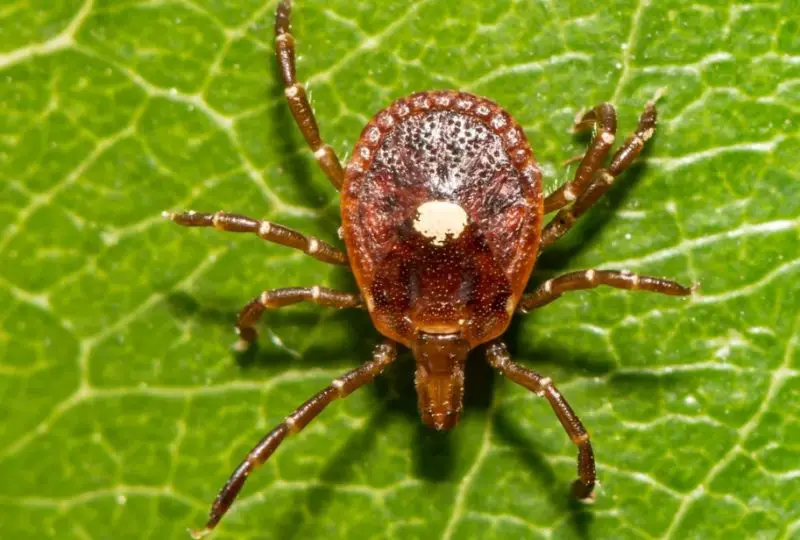
Characteristics and Identification
The Lone Star Tick is medium-sized, reddish-brown, with a distinctive white “star” or spot on the back of adult females. Males are smaller and have scattered white markings. Nymphs and larvae are much smaller and harder to see.
Behavior and Habitat
These ticks are aggressive feeders and actively seek hosts, including humans, deer, and pets. They are found in wooded areas, grasslands, and along trails, particularly in central and southern Georgia. They attach quickly and feed for several days if undisturbed.
Danger and Effects
Lone Star Ticks can transmit ehrlichiosis and tularemia. They are also linked to the alpha-gal syndrome, a red meat allergy triggered by the tick bite. Symptoms may include fever, fatigue, rash, and allergic reactions.
Observation Tips in Georgia
They are most active in spring and summer. Wearing long sleeves, tucking pants into socks, and checking for ticks after outdoor activity are important prevention steps. Clearing brush and keeping trails open reduces tick habitat near homes.
Blacklegged Tick (Deer Tick, Ixodes scapularis)
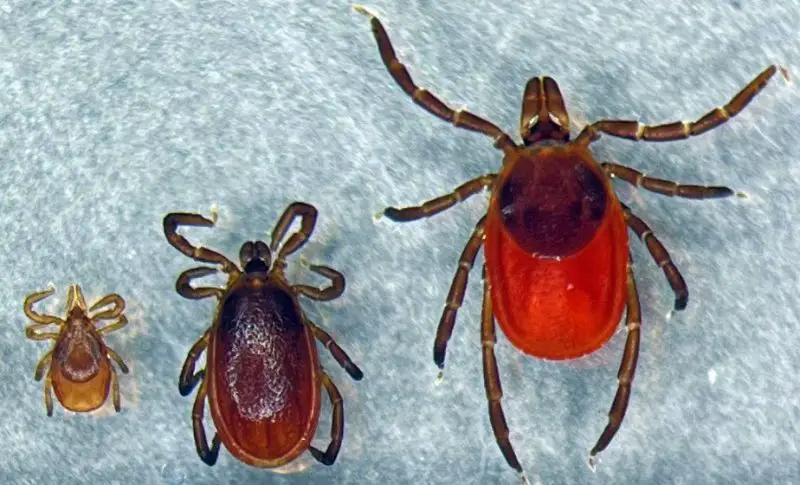
Characteristics and Identification
Blacklegged ticks are small, reddish-brown to dark brown. Adult females measure about 0.25 inches long, while males are slightly smaller. They are easily identified by their dark legs and scutum (shield) near the head.
Behavior and Habitat
They are commonly found in wooded, brushy, or grassy areas. Blacklegged ticks are slow-moving and rely on hosts brushing past vegetation to attach. They feed on mammals, birds, and reptiles, often going unnoticed for hours or days.
Danger and Effects
Blacklegged ticks are the primary vector for Lyme disease. Bites can also transmit anaplasmosis, babesiosis, and other pathogens. Early removal reduces the risk of infection. Symptoms may include fever, rash, fatigue, and joint pain.
Observation Tips in Georgia
In Georgia, they are more common in northern regions with wooded landscapes. Proper clothing, tick repellents, and post-activity checks are essential. Keeping yards clear of leaf litter and tall grass helps reduce exposure.
American Dog Tick (Dermacentor variabilis)
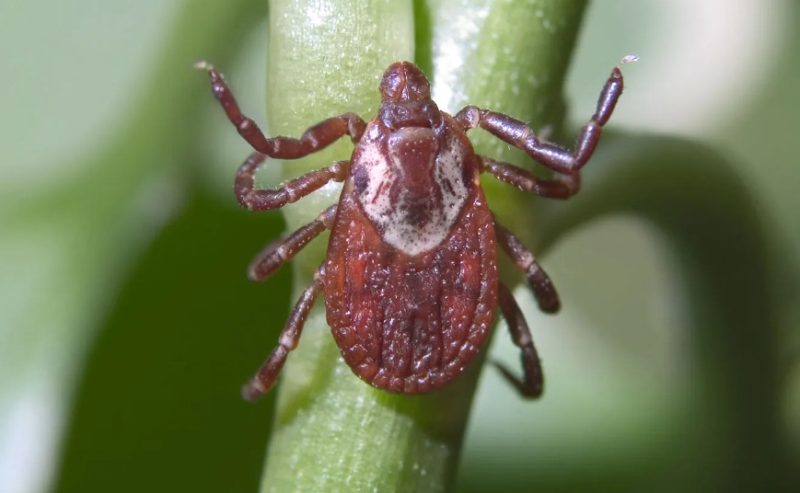
Characteristics and Identification
The American Dog Tick is relatively large, reddish-brown with a patterned scutum. Females can grow up to 0.5 inches long when engorged. Males are slightly smaller with ornate markings on the back.
Behavior and Habitat
They are commonly found in grassy fields, along trails, and on domestic animals. These ticks feed on dogs, livestock, and occasionally humans. Nymphs and larvae attach to small mammals before maturing.
Danger and Effects
American Dog Ticks are known to transmit Rocky Mountain Spotted Fever and tularemia. Bites are painful and can cause redness and swelling. Prompt removal reduces the risk of infection.
Observation Tips in Georgia
They are prevalent throughout Georgia, especially in central and northern regions. Keeping pets treated with tick prevention, mowing tall grass, and staying on trails when hiking are effective precautions.
Yellowjackets & Hornets (Vespula spp. & Dolichovespula spp.)
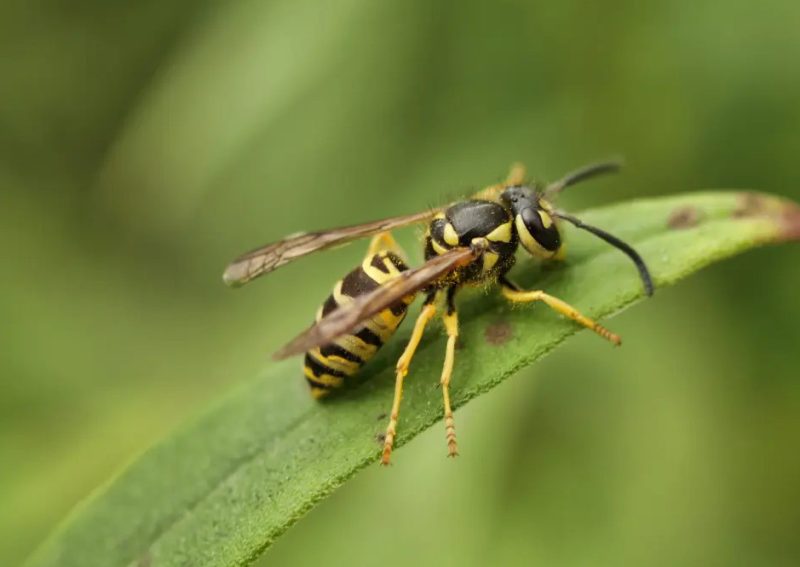
Characteristics and Identification
Yellowjackets and hornets are medium to large wasps, often 0.5–1 inch long. Yellowjackets are marked with black and yellow stripes, while hornets are larger and may have more muted color patterns. They have strong mandibles and a stinger at the rear.
Behavior and Habitat
They are social insects, building large paper nests in trees, underground, or inside wall cavities. Yellowjackets are aggressive when defending their nests and can sting multiple times. They are active during late spring through fall.
Danger and Effects
Stings are painful and can cause swelling, redness, and itching. Multiple stings or allergic reactions can be life-threatening. Those with known allergies to insect venom should carry an epinephrine auto-injector.
Observation Tips in Georgia
Yellowjackets and hornets are common statewide, particularly in suburban and rural areas. Avoid disturbing nests, wear light-colored clothing, and keep food covered outdoors to minimize encounters.
FAQs About Dangerous Bugs in Georgia
What are the most venomous spiders in Georgia?
The most venomous spiders in Georgia are the Black Widow Spider and Brown Widow Spider. Black widows have potent neurotoxic venom that can cause severe pain, muscle cramps, and other systemic symptoms. Brown widows are slightly less toxic but still capable of causing discomfort and require caution.
Are scorpions in Georgia dangerous to humans?
Yes, scorpions such as the Southern Devil Scorpion and Striped Bark Scorpion can sting humans. While their stings are painful and may cause swelling, redness, and numbness, they are rarely life-threatening. Children, elderly individuals, or allergic persons should seek medical attention if stung.
Which ants in Georgia pose the greatest risk?
The most dangerous ants are Red Imported Fire Ants, Tropical/Southern Fire Ants, and Asian Needle Ants. Their stings are painful, can create pustules, and may trigger severe allergic reactions or anaphylaxis in sensitive individuals. Avoid disturbing ant mounds and wear protective clothing outdoors.
Can ticks in Georgia transmit diseases?
Yes, several ticks are dangerous in Georgia. Lone Star Ticks can transmit ehrlichiosis and cause red meat allergy (alpha-gal syndrome). Blacklegged Ticks are the primary vector for Lyme disease, and American Dog Ticks can transmit Rocky Mountain Spotted Fever. Prompt tick removal and preventive measures are essential.
Are wasps and hornets dangerous in Georgia?
Yes. Yellowjackets and hornets are aggressive social wasps that can sting multiple times. Stings cause pain, swelling, and can be life-threatening to people with severe allergies. Avoid disturbing nests and wear protective clothing outdoors.
What is the Velvet Ant, and why is it called a “Cow Killer”?
The Velvet Ant is a wingless female wasp that delivers an extremely painful sting, earning it the nickname “Cow Killer.” Although the sting is very painful, it is not lethal. Avoid handling them directly and wear gloves when in their habitat.
How can I avoid being bitten or stung by these bugs?
-
Wear gloves, long sleeves, and shoes when gardening, hiking, or working in wooded areas.
-
Inspect clothing, shoes, and storage areas before use.
-
Avoid disturbing nests, webs, or ant mounds.
-
Keep homes sealed and use screens to prevent entry of insects.
When is the best time to observe or avoid these bugs?
Most dangerous bugs are nocturnal (spiders, scorpions, kissing bugs, wheel bugs) or active during warm months (ticks, fire ants, wasps). Early spring through late fall is peak activity for many species, so take precautions during these periods.
What should I do if bitten or stung?
-
Spider or scorpion bites: Clean the wound, apply ice, and seek medical attention if severe or if systemic symptoms occur.
-
Tick bites: Remove the tick carefully with tweezers, clean the area, and monitor for symptoms of disease.
-
Fire ant or wasp stings: Wash the site, apply ice, and seek immediate care if allergic reactions occur.
-
Velvet ant sting: Apply ice or topical pain relief and monitor for allergic reactions.

